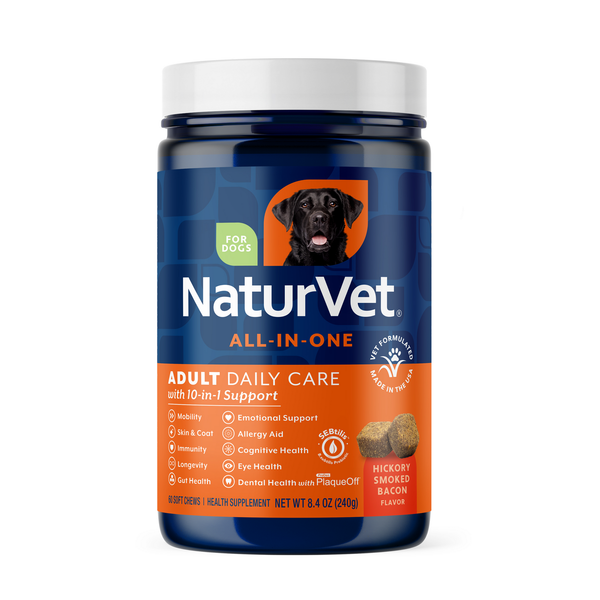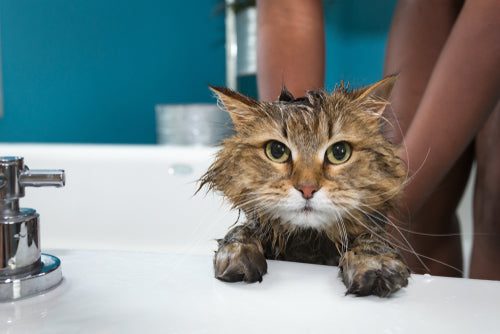Cat Bath: When, Where, & How?
It is common knowledge that cats do not like to get wet. But what else do you do when your cat is too dirty? While it’s true that cats are great at grooming themselves, sometimes that can’t quite get the job done. Sometimes, they need a cat bath.
Giving your cat a bath can be not only stressful but also uncomfortable. How do you give your cat a bath without having a battle in the tub? Fortunately, there is a way you can go about it to make the process less daunting. Here is everything you’ll want to know before bath time.
Do Cats Need Baths?

Although it would be nice to rely on your cat’s self-grooming skills, there comes a time when a bath is the only option. In general cats do not need baths often, and bathing them too much may dry out their skin. Use your best judgment, along with our tips, to know when a good time is to bathe your cat. Typically, most cats may need a bath at least a few times a year. The following scenarios will require you to give your feline friend an extra clean.
The cat is sick or aged
Cats deal with reduced energy levels as they age and find it difficult to clean themselves. If you have noticed that your cat is unable to groom properly, you have to schedule regular bath sessions.
There is dirt (or worse) in their coat
Special needs, kittens, and senior cats are common culprits of litter box mishaps and general mischief. Keep an eye out, you may have to give them a bath to undo any accidents. Another factor is how much time your cat spends outdoors, and personality traits like how adventurous he/she is. A thrill-seeking outdoor cat will naturally need to be bathed more often than a mellow indoor cat.
They have fleas
Have you noticed your cats scratching more than usual? It could be fleas. If that is the case, they'll need a good bath. Sometimes a single bath is all they will need to get rid of the fleas. A mild soap and lukewarm water should drown the fleas. After, you’ll want to brush your cat’s fur out with a fine-tooth flea comb. Take extra caution when combing around your cat’s neck and tail areas, as that’s where the fleas typically feed. For a more stubborn case of fleas, we recommend talking to your veterinarian about special shampoos and other flea treatments.
How to Bathe a Cat
Now that you know when you should bath your feline friend, it's time to get into our strategy. It may seem impossible to figure out how to give a cat a bath that hates water, but there is a right way to do it. A smooth bathing process all starts with good preparation.
Before the bath

Cats will put their guard up when they do not have control of the situation. Make sure you do your best to make your cat feel comfortable, and be patient. Before the bath, we recommend you do the following:
- Trim the cat's nails so they won't scratch you easily. Cats instinctively use their claws to defend themselves. When they are stressed, your cat may claw you while trying to avoid the water. It's in your own interest to trim their nails, as well as wear a long-sleeved shirt or long gloves.
- Remove loose fur and debris by brushing their coat. Cats shed all year long, and the extra fur will not be good for your drains. The clogging will also make it hard to get your cat clean. Brushing before the cat bath helps prevent excess fallout.
Get the supplies ready

Make sure you have everything on hand before you begin the bathing session. Not only will it make things faster, but it also ensures you don't leave your cat in the tub alone while going for a towel. You'll need the following supplies:
- A towel for drying.
- A towel or rubber bath mat for traction. Just like humans appreciate a bath mat to make the shower less slippery, so does your cat. Place a folded towel in the bottom of the tub for your cat to stand on so they don’t panic when they are slipping. From here, simply fill the tub with three to four inches of lukewarm water.
- Sprayer or a pitcher to easily rinse your cat.
- Soft cloth for washing your cat's face.
- Rubber gloves and the right clothes.
- Cat shampoo. Avoid using human shampoo as it can irritate your cat's skin.
Prepare the bath
Place your traction towel at the bottom of the tub and fill with lukewarm water—again, only a few inches will do. You can place some toys around the tub to give your cat a reason to get in the water and make them feel more comfortable. It may be easier to give your cat a bath in the sink. However, this depends on the size of your cat. For smaller cats, the sink will be easier as you won't have to bend or kneel. You can also opt for a plastic tub to get the job done.
Now you are all set and ready for the washing. Follow the steps below.

Prepare your cat
Keeping a cat calm during bath time can be challenging. Try placing your feline friend in the sink or tub without water and give them treats. You can do this a few days before bathing a cat to make things smoother. Also be mindful that you time it right. If your cat is in a high-energy mood, play with them and wear them out so that they are more mellow in the bath.
Place your cat in the water
Place some lukewarm water into the tub or sink and gently put your cat in it. Praising your cat for good behavior or talking soothingly will help keep them calm. Having a helper is always a good idea.

Wet your cat
Begin by wetting your cat's body and tail using an over-pour method. The sprayer or pitcher will be less daunting to your cat than using a faucet. Avoid the face and ears. Putting water on your cat's face will upset them and lead to serious scratches. As for the ears, some cats are prone to ear infections, so make sure to keep those as dry as possible. You can use cotton balls on your cat's ears to prevent water from entering, if they allow it.
Lather and thoroughly rinse
Lather the shampoo in your hands first to get it foaming. Doing this before allows for even distribution in your cat's fur. It also allows for a better clean while avoiding using too much.
After washing, rinse the cat again with the over-pour method. When rinsing, focus on one small area at a time and be detail oriented. Be sure to get the soap out completely– you may have to take off a glove and feel their fur with your hand to be sure. Soap residue can cause irritation to your cat's skin. Even worse, it can cause dirt and debris to cling to their fur, defeating the purpose.
Clean your cat's face
Wipe off your cat's face using a soft cloth. While at it, you can also clean outside their ears with a cotton ball. Use care around the cat's ears and eyes since they can easily get damaged. You can add a small amount of shampoo to the washcloth if there is something sticky on your cat's face, only if necessary.
Dry them off

The cat bath is over, but you are still not done yet. You need to dry your cat with a towel, so they don't get cold. Their fur takes a long time to try, and cats hate every second of being wet. After drying, remove your cat from the tub and wrap them gently with a clean towel to keep them warm. If your fur friend has long hair, gently brush it to detangle the fur. Make sure your cat is completely dried. Using a hair dryer is not a good idea because the noise will terrify your cat. The heat also dries out their skin, since cats are extra sensitive after a bath.
Give them treats
Bath time is now over, and it's time to reward your cat. Praise, treats, and playtime will help your cat come around the next time you give them a bath.
You can also give them cuddles if they haven’t had enough of you yet. Do anything to help them associate bath time with good things. The next time you give them a bath, they won't be as scared since they know good things will come from it
You did it! Your feline friend is now clean and hopefully both you and your cat won’t be afraid of bath time anymore.

Cats are good at grooming, so try to only reserve baths when necessary. Even though it's terrifying for your cat to get into the water, they are adaptable creatures. With your support and with enough time, they often come around to an extra clean once in a while.
Join Our Pack
Follow us @NaturVet on social media to fill us in on any cat bath tips we might have missed. And, check out the rest of NaturVet.com. We’ll keep you up to date on all our latest pet resources, supplements, tips and tricks, and more – everything you need to be the best pet parent possible!























